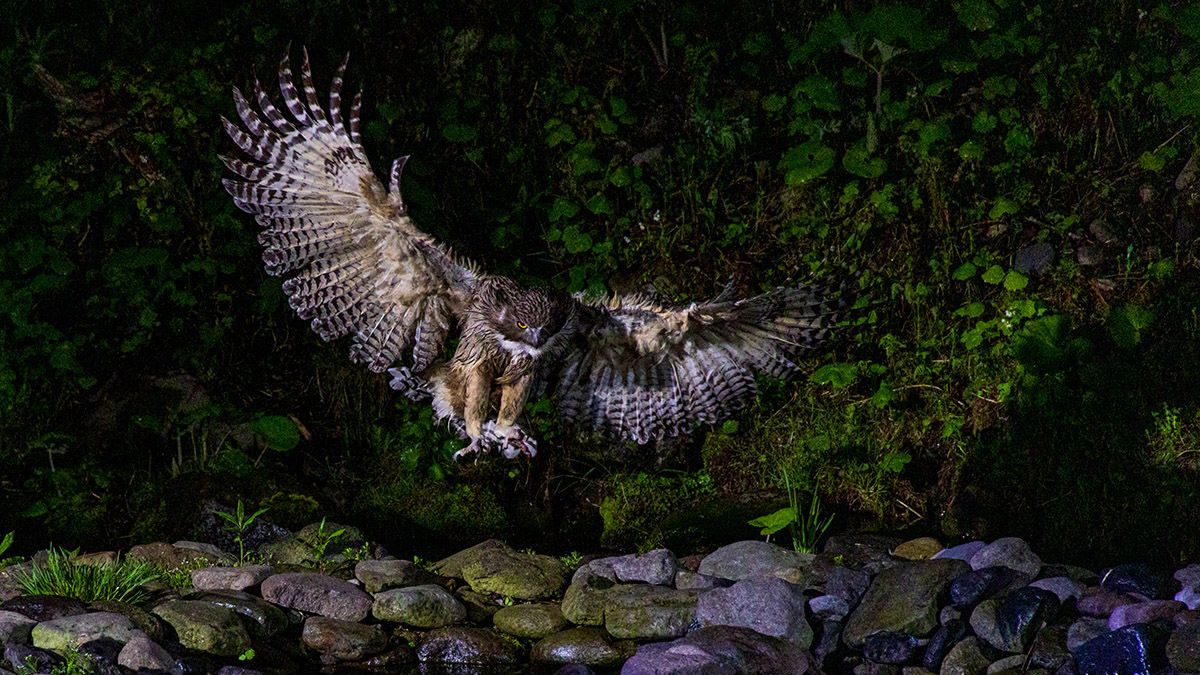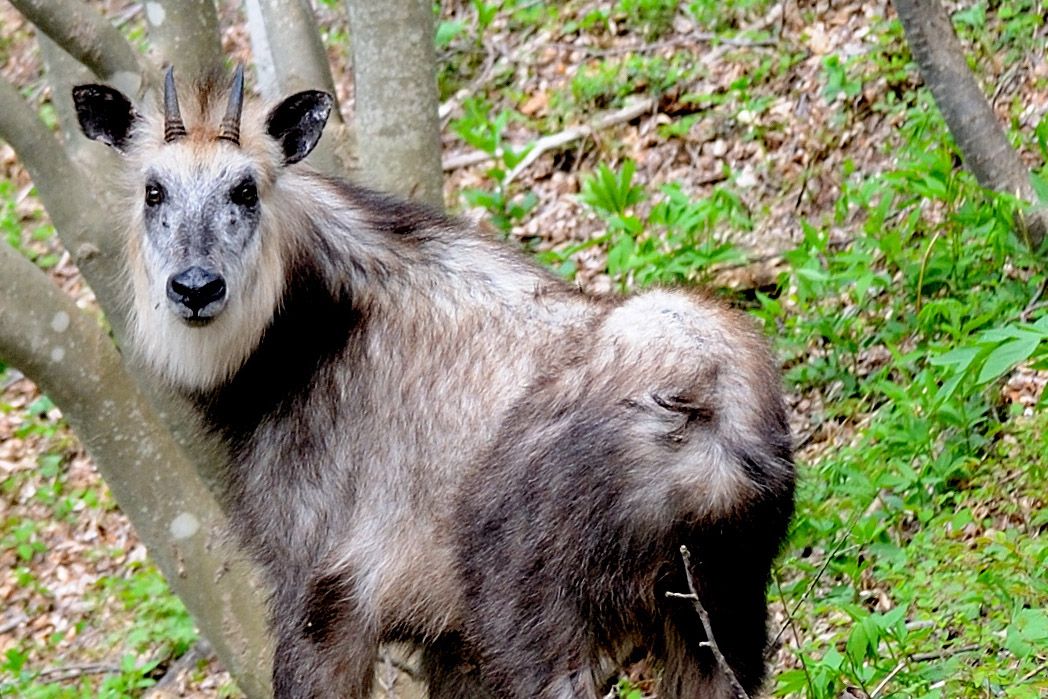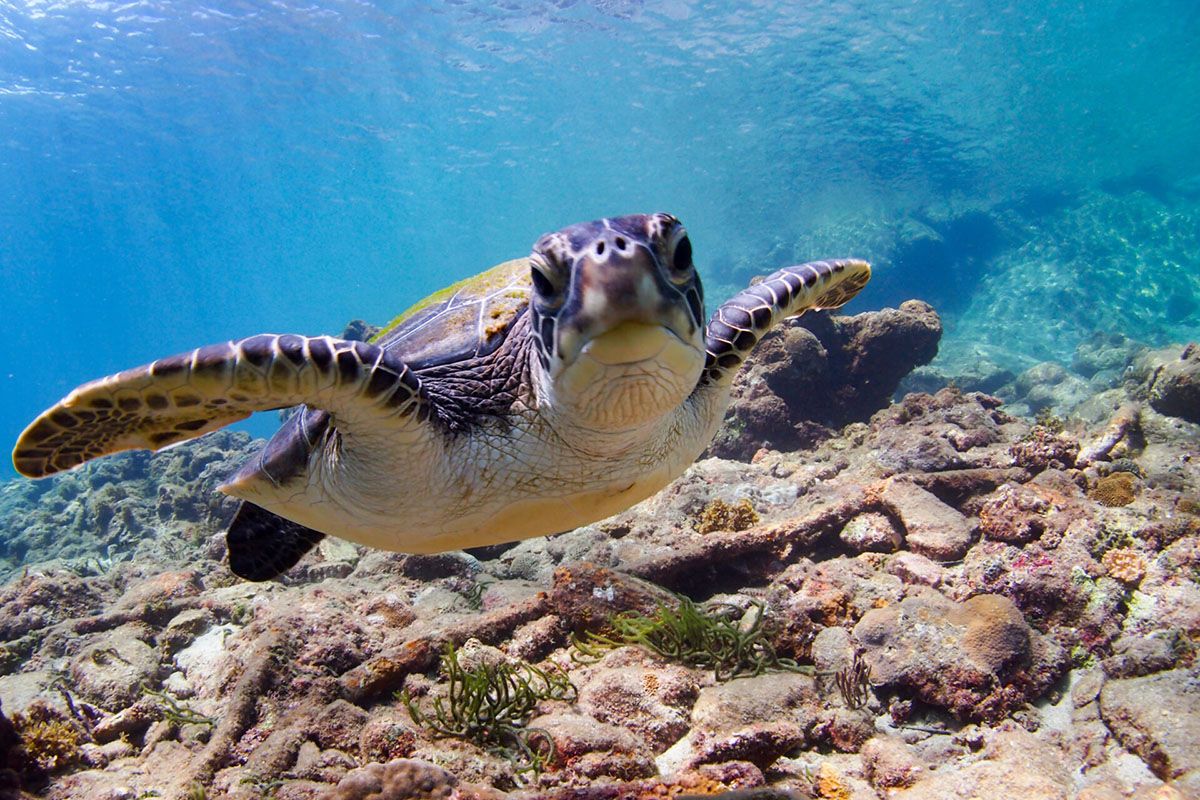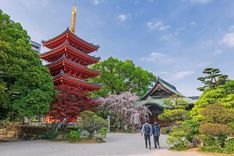- Shiretoko: an integrated ecosystem of ocean, rivers and soaring mountains
- Shirakami-Sanchi: birdlife, beech trees and botanical beauty in the Forest of the Gods
- Ogasawara Islands: an oceanic Eden of abundant endemism
- Yakushima: a magic-steeped island of wondrous wildlife
- Amami and Okinawa: evolution unveiled on biodiverse islands
Wildlife lovers looking for fresh destination inspiration might want to investigate journeying to Japan’s World Natural Heritage Sites, many of which received this prestigious UNESCO designation as a result of their remarkable biodiversity. In terms of the numbers, we’re talking Galápagos Island levels of endemism. As such, beyond offering opportunities to enjoy one-of-a-kind cultural experiences and outdoor activities, Japan’s five World Natural Heritage Sites are hands-down bucket-list wonders for travellers who are into wildlife and nature. From a wilderness peninsula that plays host to the world’s biggest owls, and rare flora and fauna in a Forest of Gods, to island idylls brimming with endemic species, read on to discover the unique wonders of each site, and where to go to witness them.
Shiretoko: an integrated ecosystem of ocean, rivers and soaring mountains

Mountain hawk-eagle © AdobeStock
As a result of its location at the lowest altitude in the world where sea ice can form, the majestically rugged wilderness of Shiretoko sustains a unique richness of life forms.
Here, on a narrow peninsula that prods the Sea of Okhotsk, a dynamic food chain begins with the plankton that’s formed from nutritive salts in the sea ice. This in turn nourishes an abundance of marine life, including fish, seabirds, dolphins and whales, while salmon rush upstream and become vital sources of food for bears and birds of prey.
Staying on the subject of birds, there’s a reason Shiretoko is on the radars of devoted ornithologists. The region plays a crucial role in the survival of a number of species, among them Steller’s sea eagles (the world’s heaviest eagle, and biggest sea eagle), and white-tailed eagles.
Arguably, though, the endangered Blakiston’s fish owl sits top of Shiretoko’s must-see avian tree. With a whopping wingspan that can reach 190cm, this is the world’s largest species of owl.
Meanwhile, Shiretoko’s primeval forests play host to red foxes, Eurasian red squirrels and Ezo sika deer, an endemic subspecies that’s perhaps best seen from the boardwalks around Shiretoko Five Lakes (AKA Shiretoko Goko).
Shirakami-Sanchi: birdlife, beech trees and botanical beauty in the Forest of the Gods

Japanese serow ©️Chiharu Gotoh
Home to one of the world’s biggest beech forests, Shirakami-Sanchi sustains unique ecosystems and hosts swathes of precious species across an expanse that’s aptly known as the Forest of the Gods.
Here, in cool-temperate forests of endemic ancient Siebold's beech trees that once cloaked all of northern Japan’s mountain slopes, unique snow-adapted plants thrive through winter. Come early spring, vibrant Katakuri (Erythronium japonicum) and Kikuzaki ichige (Anemone pseudoaltaica) bloom from late April to May, while delicate Ice Age-originated Aomori-mantemas burst forth in June.
Botanical marvels asides, Shirakami-Sanchi is also big on birdlife, with 94 species confirmed here, including the black woodpecker, whose extraordinary size (up to 50cm tall) is evoked by its Japanese name, kumagera — kuma means “bear”. Golden eagles and mountain hawk-eagles can be sighted here, too.
Shirakami-Sanchi is also notable for a number of mammals, among them the Japanese serow, which has been designated a Special Natural Monument, the Japanese black bear and the Japanese macaque, while its pristine mountain rivers and streams teem with sakura masu (cherry salmon), ayu (sweetfish) and iwana (East Asian trout).
Ogasawara Islands: an oceanic Eden of abundant endemism

Humpback whale, Ogasawara Islands
Formed in isolation from any continent, some 1000km south of mainland Japan, the Ogasawara Islands are blessed with a bounty of uniquely-adapted endemic life forms. This comes as a result of its plant and animal species having long taken their own adaptive evolutionary paths after being brought here by birds, carried by winds, or washed up by the Bonin Blue sea.
In terms of big-picture numbers, around 40% of the islands’ vascular plants (i.e. trees, shrubs, grasses, flowering plants and ferns) are endemic, along with 25% of their insects, and over 90% of land snails.
Ogasawara’s most notable avian endemics include the Ogasawara greenfinch and the Bonin white-eye, a bijou songbird with distinctive black triangular markings around its eyes, also known as the Bonin honeyeater. The islands are also a breeding ground for the critically endangered Bryan’s shearwater. Birds aside, the Bonin flying fox (AKA the Bonin fruit bat) is another airborne endemic highlight.
Ogasawara’s marine-life is also something else, thanks to the evolution of unique freshwater fish like Genicanthus takeuchii (spotted angelfish). Also notable for being Japan’s sole breeding ground for increasingly at-risk sand tiger sharks, the Ogasawara Islands boast Japan’s biggest breeding ground for green sea turtles.
Yakushima: a magic-steeped island of wondrous wildlife

Loggerhead turtle, Yakushima
An entrancing island of misty mountains and moss-carpeted forests thick with ancient cedar trees, Yakushima will enchant wildlife-lovers who are wondering where to go for a mix of mammals, marine-life and birds.
Also known as the Alps of the Ocean, Yakushima’s fairy-tale forests throng with endemic mammalian subspecies, including the Yakushima deer and Yakushima macaque. On the avian front, 188 species have been confirmed on Yakushima, with memorable sightings including the Japanese scops owl — a distinctive red-eyed, tufty-eared creature.
More wildlife wonders are to be found on Yakushima’s coastline, where thousands of sea turtles come ashore to nest. In fact, around 40% of the loggerhead turtles that nest in Japan do so on Yakushima’s Nagata Beach, which makes it the biggest nesting area of its kind in the Northern Pacific region. As a result, Nagata Beach has been given protected status under the Ramsar Wetland Convention.
Controlled night-time turtle-watching tours operate from mid-May to mid-July, enabling visitors to witness the unforgettable sight of turtles coming ashore, and laying eggs. Come mid-July, hatchlings start to emerge from the sand.
Amami and Okinawa: evolution unveiled on biodiverse islands

Okinawa rail ©︎ Ishida Koji
Reflecting the isolated nature of their evolutionary journey (the islands were separated from Honshu and the Eurasian continent following a post-glacial period of rising sea levels), the subtropical Natural World Heritage areas of Amami and Okinawa are among the most biodiverse places on earth.
For context, despite occupying less than 0.5% of Japan’s land mass, the islands contain 26% of the country’s vascular plants (almost 2000 species), 57% of terrestrial and freshwater vertebrates, and 21% of insects.
At every turn — from coastal mangrove forests, to sheer-peaked mountain rainforests — Amami and Okinawa’s showstopping landscapes unveil evolution in action, and extraordinary levels of endemism. For example, 62% of terrestrial mammals here are endemic, including the Amami Rabbit. The sole species in its genus, this small-eared, big-clawed creature is only found on Amami-Oshima and Tokunoshima.
Other notable species include the nocturnal Okinawa spiny rat, and the extremely rare Iriomote cat, a subspecies of leopard cat that’s only found on Iriomote Island. Mention must also be made of the striking orange-beaked Okinawa rail. Almost-flightless, this is endemic to northern Okinawa.
If this run-down of the unique wildlife wonders of Japan’s UNESCO World Natural Heritage Sites has left you longing to include them in your own Japan itinerary, don’t miss our overview of each destination. You might also want to take inspiration from the top tours and outdoor activities that can be enjoyed in each of them.












